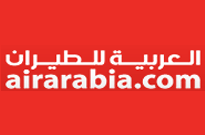Egypt: Transportation
Egypt Transportation Profile 2012
25/11/2010 Shipping Report Q4 2010
Egyptian ports, which felt the impact of the global recession last year, were seeing the first signs of recovery trickling through. In May, the Egyptian authorities reported an 8% year-on-year (y-o-y) surge in the Suez Canal's revenues to US$374.9mn in April 2010. The canal's revenue stood at US$379.4mn in March 2010. The canal recorded a slight improvement in non-oil vessels traffic and tonnage in April 2010, while its oil vessels traffic and tonnage dropped. The Suez Canal, which connects the Red Sea to the Mediterranean, is the third largest generator of foreign currency in the country, after tourism and remittances. Recently, the Suez Canal Authority decided to freeze canal transit tolls for 2010, keeping the freeze that was put in place for 2009. In addition, the Egyptian authorities also offered discounts to vessels transiting the Suez Canal in an effort to see out the global economic crisis.
Midway through 2010 the operating environment facing the Egyptian ports and shipping industry was good, despite political risks. Egyptian economic growth largely side-stepped the effects of the global recession in 2009. The pace of growth slowed but did not turn negative. We expected some further slowing in 2010, caused by weakening consumption and private investment. After 4.7% GDP growth in 2009, we predicted the pace would ease further to 4.6% in 2010, before picking up again to 4.8% in 2011. We expected the average growth rate in the period to 2014 to be 5.1%, clearly marking out the country as a regional out-performer.
The total volume of goods handled by the Port of Alexandria continued to grow through the global downturn, although we see the pace of expansion slowing sharply over our forecast period. Total tonnage rose by 8.7% to 22.096mn tonnes in 2009 and we are predicting a further 5.0% increase this year, to 23.194mn tonnes. At Port Said (PS), where transhipment business plays a bigger role, tonnage dropped by 7.1% in 2009, and we are predicting a further small drop of 0.7% to 8.832mn tonnes in 2010. Box traffic at both ports is expected to continue growing, but at a low rate, which will lag behind the expansion of the domestic economy.
We expect exports to remain quite strong over the medium term thanks to high energy prices and a revival in Suez Canal traffic and tourism revenues. During 2009, Egyptian trade (imports + exports) fell by 15.5% in real terms. We predict it will fall by a further 0.9% in 2010 before returning to a growth path with 3.0% expansion in 2011. Across our five-year forecast period to 2014, foreign trade will grow by an annual average of 2.9%, trailing GDP. Over the same five years, exports will grow by an annual average of 3.3% ahead of imports with growth of 2.6%.
We believe the main downside risk to our ports and shipping forecasts for Egypt is political and concerns the run-up to the elections next year. As previously mentioned, the authors view is that the opposition remains too divided to win the elections. But the desire for change, the government's selective use of repression, potential divisions within the ruling party over the succession and long-standing allegations of electoral fraud could all come together to generate protests and disruption which would have a destabilising effect on the economy.
In addition to overseas routes, Egypt Air provides reliable service to the air inside to major tourist destinations from its hub in Cairo. The Nile system (about 1600 km. Or 1000 km.) And the main canals (1,600 km.) Are important locally for transportation.
The Suez Canal is a major waterway of international trade and navigation, which connects the Mediterranean and Red Sea. The Ministry of Transport, other government agencies are responsible for transportation to Egypt. The main ports are Alexandria, Port Said, Damietta and the Mediterranean, and Suez and Safaga on the Red Sea.
Egypt has one of the highest incidence of road fatalities per miles driven in the world. There is little or no markings. Most traffic lights in Cairo is not working, but intersections are provided by police who use subtle finger movements to indicate where cars can circulate. The traffic rules are routinely ignored by impatient drivers: vehicles travel at high rates of speed, or in the wrong direction on one way streets . Dodge Pedestrians constantly in and out of traffic, and a variety of animals are common on the roads. [1 rainy winter] Rare can cause extremely slippery road surfaces or localized flooding .
intercity highways are generally in good condition, but unmarked surfaces, stray animals and broken down vehicles without lights or reflectors are among the many hazards that may be encountered on the road, especially at night .
Some roads, especially in the Sinai and southeastern part of the country are inaccessible to foreigners. Then go to a road you can travel on, if you're a stranger. A large popular form of transport is by boat! Even though Egypt has expanded and developed its road network, it does not mean they are not still travel the Nile to get from one place to another.























